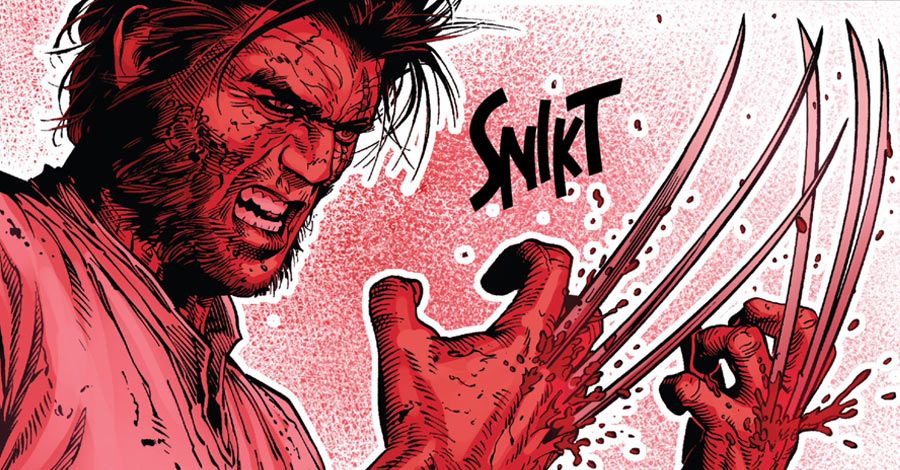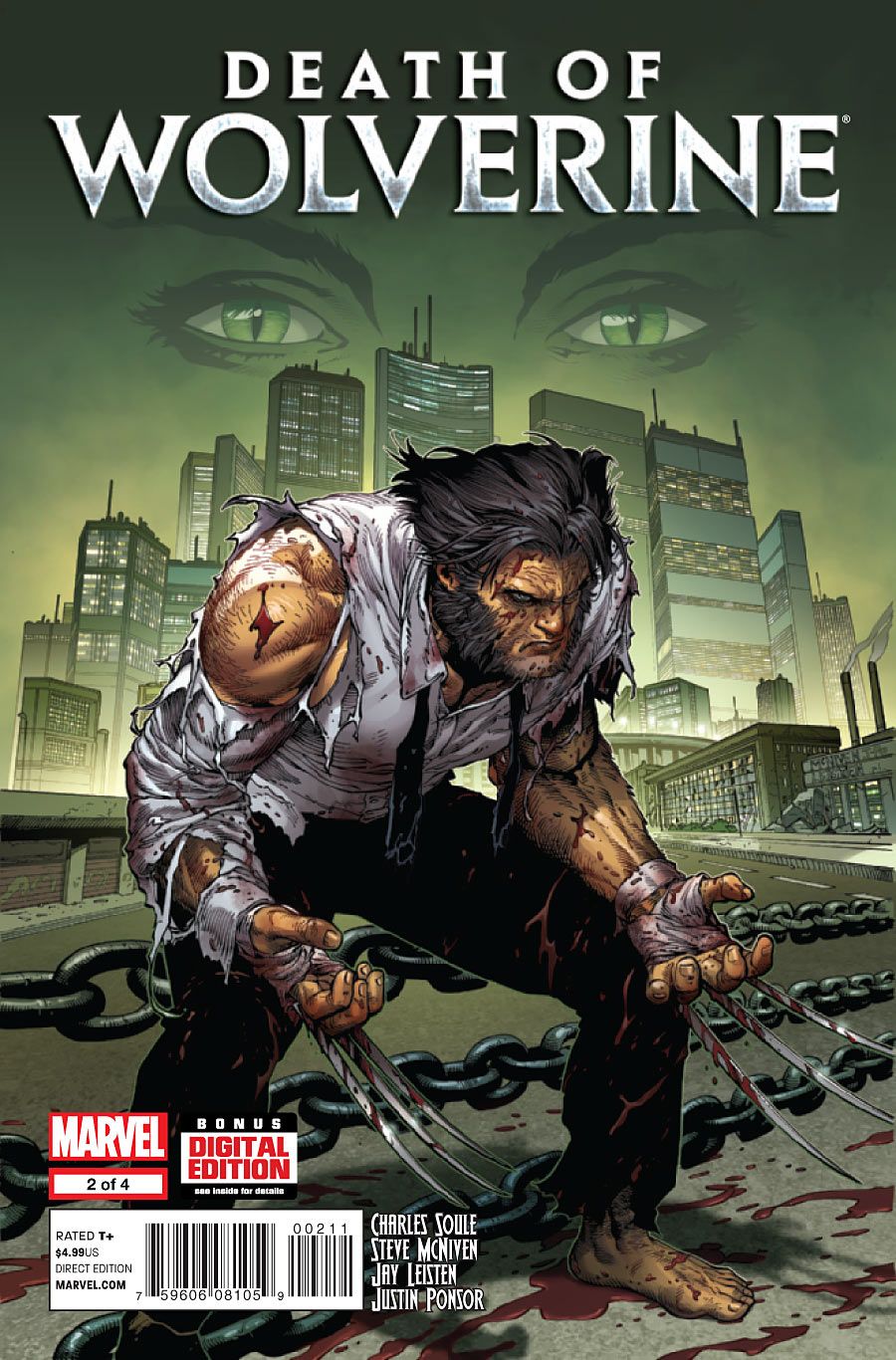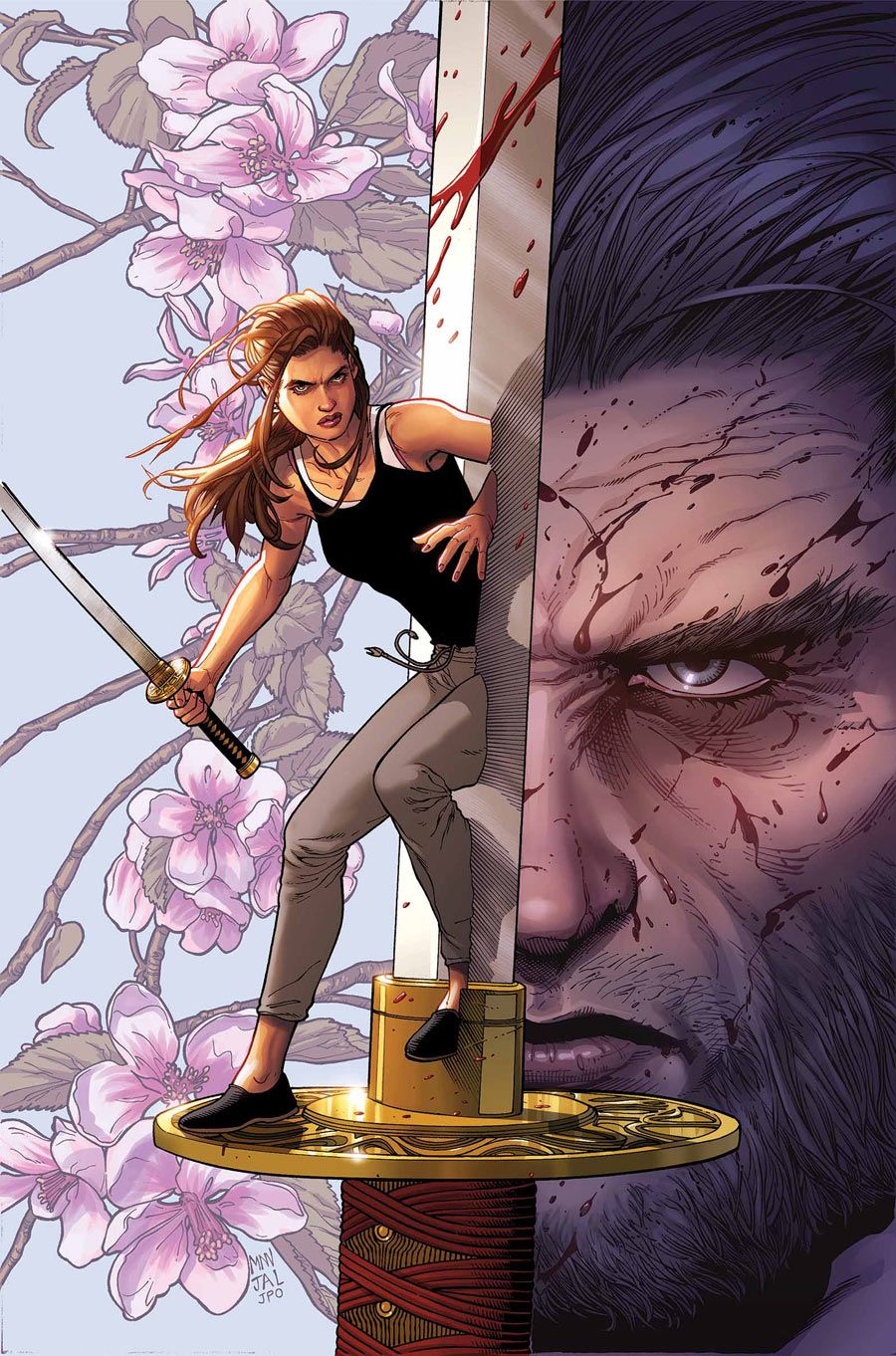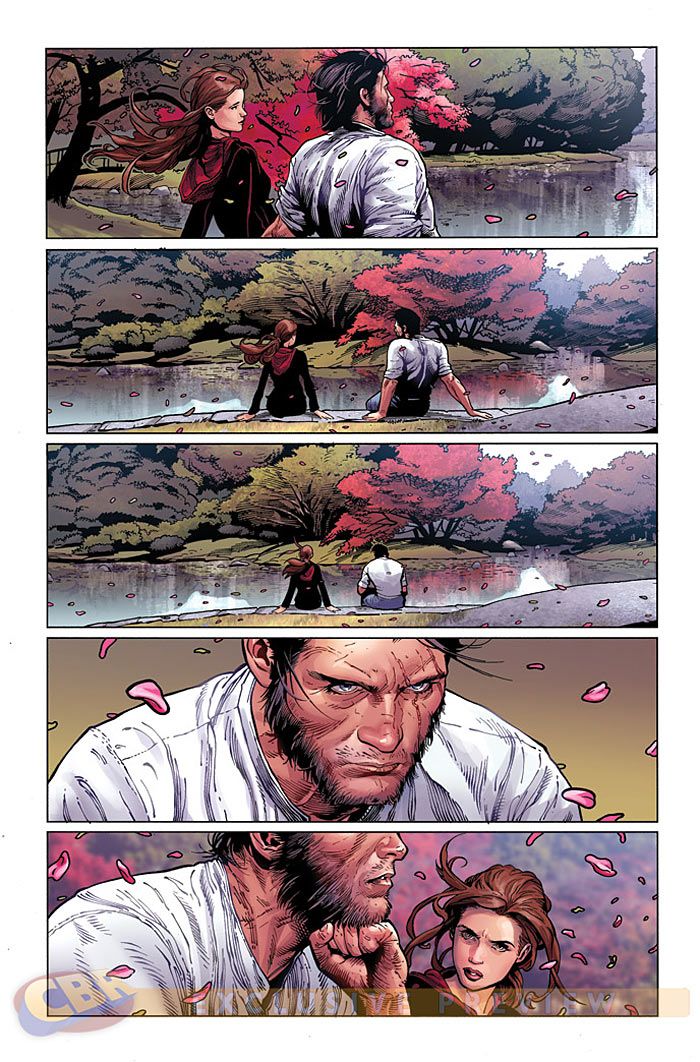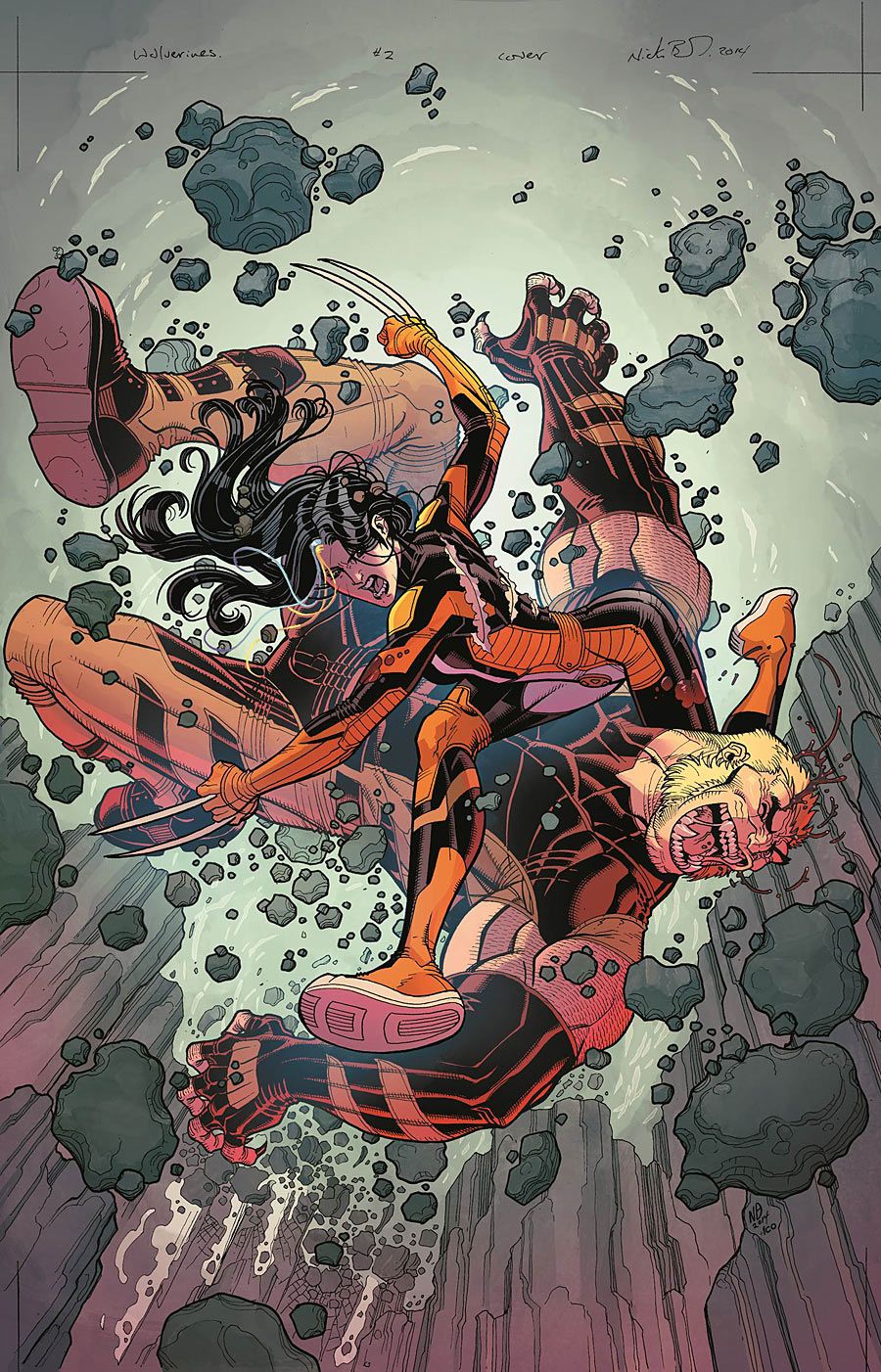SPOILER WARNING: This article contains major spoilers for the recently concluded "Death of Wolverine" miniseries.
For years, Wolverine's ubiquitous nature was an in-joke among comic book fans -- after decades of being in nearly every X-Men comic book, he branched out to appear in multiple Avengers series, not to mention his own long-running solo titles.
Of course, that should slow down in a big way in the current Marvel Comics publishing landscape post-"Death of Wolverine," which wrapped up earlier this month. In writer Charles Soule and artist Steve McNiven's four-issue series, Wolverine -- whose healing factor had been removed during the Paul Cornell-written run on the "Wolverine" solo book -- accepted his own mortality during a mission that took him back to Weapon X, the twisted experimental program that gave him his adamantium skeleton in his formative days.
RELATED: Soule & Fawkes Go Weekly With "Wolverines"
Unlike a lot of other comic book stories, the "Death of Wolverine" title was not a misdirection, but a spoiler: The character did die -- for now, at least -- at the end of Issue #4, becoming encased in adamantium while saving multiple other individuals from suffering a similar fate as he did. CBR News spoke with Soule about what it was like to kill off a hero who had become so entrenched in not just comic books, but pop culture as a whole -- who hasn't seen Hugh Jackman's portrayal of Logan over the past 14 years? -- and the plans to fill the void left by his death going forward, including the recently announced weekly "Wolverines" miniseries written by Soule and Ray Fawkes with the first arc illustrated by Nick Bradshaw.
CBR News: Charles, let's start at the beginning -- the very beginning. I'm not sure I've heard you talk much about this before, but how big of a fan of Wolverine were you before taking on "Death of Wolverine"? Was he a character that had special significance to you in your comic book-reading life?
Charles Soule: I think Wolverine's a part of almost everyone's comic book-reading life, isn't he? Or, considering the events of the past few months... wasn't he? I would say the most important thing to me when I was thinking about taking this gig (and it didn't take long for me to say yes, really) was to consider whether I already had a character in my head... and I did. Sort of a mix of Clint Eastwood's Man With No Name and a Kurosawa samurai. Implacably deadly but with a highly developed sense of honor, extremely intelligent, with a sense of dark, dry humor and a gift with the ladies. Ultimately, I think he's one of the most human of the superheroes -- Wolverine is deeply flawed, and that's what makes him great.
So, yes, he was significant to me. He's one of the most ubiquitous pop culture figures of the past four-plus decades. He's significant to half the planet, probably.
Given the nature of the character, the length of the story and how it was presented, "Death of Wolverine" was one of the most high-profile comic book death stories in quite some time. But, of course, there have been many comic book death stories over the years. As a reader and a creator, do you have any favorites? And did any help influence the way you approached this story, even just in small, subtle ways?
Certainly -- I think the biggest difference here was that the "death" was in the title. It wasn't a surprise, the way things like Superman's death, Captain America's death, or even the Breaking of the Bat were intended to be. So, it was more about finding the way to make the journey matter here. I suspect that many readers had an idea in their heads about what Wolverine's death would look like -- in part because of the way other heroes have gone out -- and I wanted to take those expectations and work with them. So, from that perspective, sure, all the other deaths influenced me.
You wrote over on your blog about the specifics of the inspirations for each issue of the miniseries, which draw from different points of Wolverine history. But given just how many different things Wolverine has been over the decades, the different types of stories that he's been featured in, and how many characters he has a meaningful history with, how difficult was the process of narrowing that down? Even though four issues isn't short, did you find yourself wishing you had a bit more space?
I don't think there's a comics writer around who doesn't wish for more space when they starting getting into the high teens on their page count for any given issue. It's very common to have 10 pages of story to fit into seven (or something like that.) In this particular story, I knew it had to feel big, and I thought I could achieve that despite the relatively short length by relying on readers' familiarity with Logan's history. I had a bunch of great signifiers and symbolism available to me. Putting Wolverine in a samurai outfit for a few pages makes readers think of every one of those incredible Japan-set stories. Putting the start of the story in the Canadian wild brings "Origin" to mind. In essence, I let some of the other great writers who have approached the character do some of the heavy lifting for me. (Thanks, guys!)
One character definitely included was Kitty Pryde -- it's notable that she was the only other X-Men member in the story, and really the biggest presence who tied in to that major part of Wolverine's history. How did you arrive on using her in the story?
That was an easy call. I've always loved Kitty, I knew I wanted to go back to Japan and involve Ogun, I knew I wanted to reference the mentor relationships he had with people like her, Jubilee and others, and I wanted to bring in the idea of romantic relationships as well. Kitty was the perfect piece to make all that happen.
As for why I didn't include other X-Men -- well, while those are amazing stories, this was a book about Logan. Focusing too much on his superhero team work -- while an important part of his legacy -- would have taken away (in my mind) from the story I wanted to tell. I wanted to have this be about all of the different parts of Logan -- who he's become, and how he's evolved beyond that bloodthirsty berserker we first saw back in "Hulk" #180-#181.
Of course, want to ask about the death scene itself: Was the mechanism of the actual death something that came to you pretty easily? And was it important to devise a death that felt final (as final as these things get) -- and not simple to revert?
I wouldn't say it was easy, although I did have the final image in my head pretty early on. I don't care too much about the "finality" of it from a technical, nitpicky perspective. I mean, that's irrelevant. There is no comic book death that can't be reversed, after all, so building the perfect, inescapable death seemed like a waste of resources, to my mind.
What I did want to convey was an emotional finality. The sense that Logan had arrived at a place in his heart and his mind where he was ready to go. I think the ending works that way in spades.
And, to be fair, the guy had no healing factor and was encased in molten metal, which, when it hardens, is the most unbreakable substance in the Marvel Universe. Only in comics is that something other than unquestionably final. (Which, of course, is why comics are rad.)
Through the series, and especially in that last scene -- where Dr. Cornelius asks "What did you ever do but kill people?" and that's juxtaposed with scenes of Wolverine's life -- the character's humanity seemed to be an important aspect of the story. Not portraying Wolverine simply as a badass (though there's some of that) or a killer, but as a hero with a real heart. How much of a priority was illustrating that aspect?
For me, it was the priority. As I mentioned above, Logan has been so many things... making him be anything other than the most noble version of himself at his end would have seemed like a dirty trick. I wanted to try to convey as many facets of Wolverine as I could in the space I had, but that's where I wanted to end up.
Also, I would suggest readers look at the conversation Logan has with Kitty in the garden in Tokyo near the start of Issue #3. That bit's pretty relevant to what I was trying to do with the book.
Steve McNiven is definitely one of those "special occasion" artists, who don't show up on interiors every month, and when they do, it's viewed as a big deal. How did you enjoy working with him for this story, and what unique qualities do you think he brought to the page?
Other than perfection? Steve -- along with Jay Leisten on inks and Justin Ponsor on colors -- has the ability to create superhero action that feels both real and hyper-real. His character acting is incredible, in particular. The script for this book had a number of subtle emotional reactions and beats, and not one of them was anything less than dead on. It was wonderful just to... not worry about it, if you know what I mean? I wrote the script (and rewrote it, and rewrote it...) but once it was all done, it was really just a matter of letting the pages roll in. I was so happy to work with this team, and would do it again in an instant.
"Death of Wolverine" has multiple follow-ups, the latest announced being the weekly "Wolverines" series you're co-writing with Ray Fawkes. We see characters introduced in "Death of Wolverine" like Sharp, who are known to be playing a larger role beyond this point -- did you know that you were going to be doing more stories in the Wolverine world as you were writing "Death of Wolverine"? Were these seeds deliberately planted with the knowledge that you'd have the space to get back to them?
The idea of expanding the MU via Logan's death was part of the project's to-do list from the very start. We lost a huge character, of course, but we thought it would be interesting to see what new stories could be generated from Wolverine's absence. I planted many seeds in "DoW" for future bits -- you'll see them playing out in "The Logan Legacy," which looks at the reactions from some of the darker Wolverine-related characters to Logan's death, and "The Weapon X Project," which serves as a direct sequel to "DoW," picking up about two seconds after it ends and following the adventures of some of the characters we met towards the end of the series.
Both together work as a bridge between "DoW" and the "Wolverines" weekly. It's really all one gigantic story, and builds to an endpoint (the end of the "first phase" of the weekly, basically) that will in turn generate a ton of new stories. A lot of work, but I'm very proud of it, especially the stuff Ray Fawkes and I are doing for the weekly. It's a chance to work with some seriously underexposed or somewhat one-note characters (Lady Deathstrike, for example) and deepen them in fun ways.
Wolverine has a special relationship with fans, to ones who really love him to ones who think he's overexposed (which, as Axel Alonso has joked, won't be the case any more). From however much you've gauged the reaction, how pleased are you with how fans have received "Death of Wolverine"? It's an interesting comic book death in that I haven't necessarily seen a lot of people who seem actually upset about it -- maybe because they knew it was coming for a while -- but were more just interested in seeing how it would happen.
You know what? I'm very happy with the reactions. They run the gamut, as is to be expected, but "Death of Wolverine" seems to have inspired a lot of thought and passionate discussion in every direction, which is really all you can ask for as a creator, especially on a project like this.

